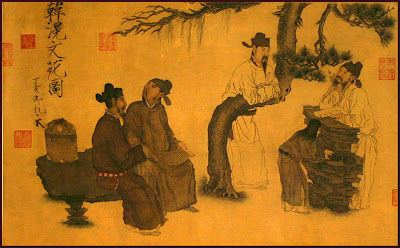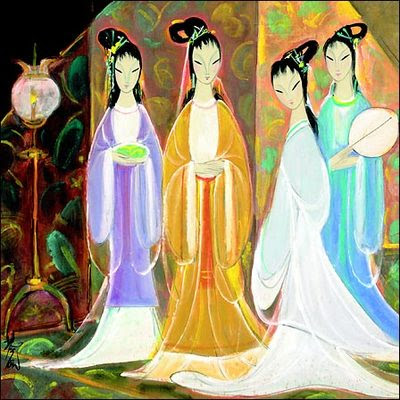Art of China boasts a history of lasting for over 5000 years, which makes it one of the oldest arts in the world. Chinese Art embraces a huge diversity of forms from the various ruling dynasties of China. Several philosophers, teachers, religious figures, and even political leaders shaped the versatile Art of China, which includes fine arts, folk arts, and performance arts. Ming and Ch'ing dynasties were the last imperialistic dynasties of China.
Ming Art of China
The Ming Dynasty, one of the last outstanding dynasties, ruled China from 1368 to 1644. It was also the last dynasty to be dominated by Han Chinese. All art forms boomed during this period, including painting, poetry, music, literature, & dramatic theater, as Ming leaders restored the sense of cultural identity and respect for conventional artifacts and artisanship.
Carved designs on objects decoratively covered with lacquer or the intricate design on porcelain wares were generally found in the homes of affluent. The Ming artifacts were definitely more creative than those of the previous dynasties were. Artwork in the Ming dynasty also included embroidered silks and wares in jade, ivory, and cloisonné. The techniques of color painting and color printing were honed during this period. Some of the famous visual artists of Ming Dynasty were Ni Zan, Shen Zhou, Tang Yin, Wen Zhengming, Qiu Ying, Dong Qichang, and many others. Ming dynasty is also well known for the construction of "Forbidden City," which is a majestic palace of impressive attributes and luxuriousness.
Ch'ing Art of China
Ch'ing Dynasty also known as Qing Dynasty or Manchu Dynasty was the last ruling dynasty of China, governing from 1644 to 1912. The Ch'ing Art of China is the assortment of all the artistic styles that had developed in the past 3000 years of Chinese civilization. The painters, such as Shih-Tao and Chu Ta, conveyed themselves more directly through liberal brush strokes, carried out in dry or wet-brush techniques. The demand for Chinese blue-and-white porcelain, lacquer, and jade surged in Europe during this period. The design of the porcelain wares were made simple and the colors became more graphical, a marked departure from blue-green colors used in Ming dynasty. The objects of daily use like furniture were made from materials like wood or bamboo. With the opening up of trade relations with Europeans, the Ch'ing Art was heavily influenced by their western counterparts. The buildings and palaces were constructed according to Western style, for example the "Yuanmingyuan Palace" that was later destroyed in the 19th century.








